




Introduction to Motion
Have you ever wondered how a golf player estimates the height, speed, and trajectory of his perfect shot? All these questions can be easily understood by the concepts of motion, specifically, the kinematic equations of motion.
As per Physics, motion formulas are those equations or mathematical expressions that best describe the state of a system in motion concerning time. They are described in terms of initial velocity, acceleration, distance, displacement of the body, and time taken to complete the whole motion in any dimension, which means motion formulas can be worked on any system placed in either one, two, or even three-dimension.

Different Types of Motion
Basic Terminologies
Displacement - It is the shortest length covered by an object from a fixed point in a particular direction.
Distance - It is the total length covered by a path in a journey between two points.
Speed - It is defined as the total distance travelled per unit of time.
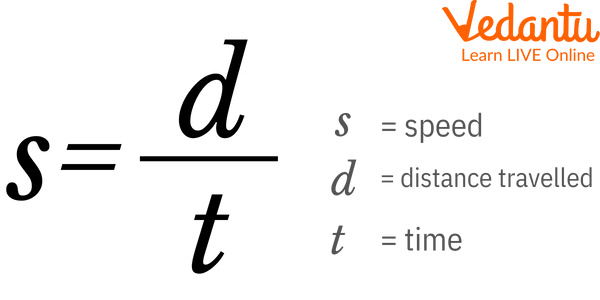
Formula for Speed
Velocity Displacement Formula
Velocity - It is defined as the rate of change of displacement per unit time of an object.
The velocity-displacement formula is given in the following image:
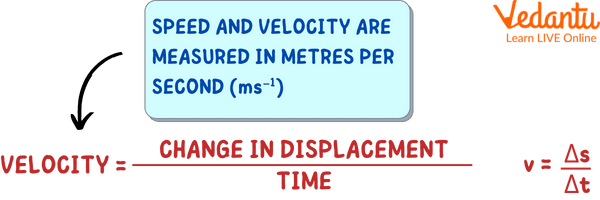
Equation of Velocity
Displacement Formula
By the above formula for velocity, we can also derive the displacement formula.
Wherein displacement = velocity x time interval.
Acceleration Velocity Formula
Acceleration - It is the rate of change of velocity of an object over a period of time.
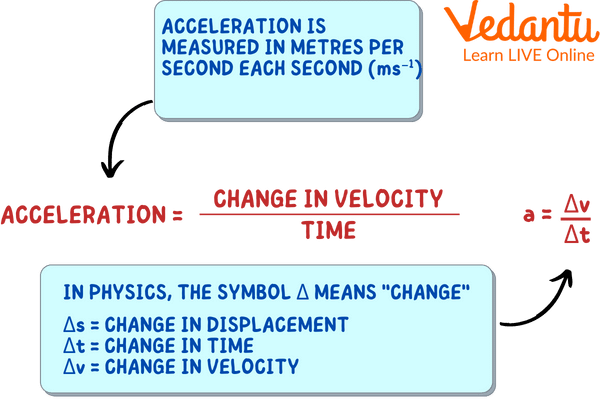
Equation of Acceleration
The Kinematics Equations of Motion
Equations of motion are a set of four formulas that are used to describe the state of an object moving under constant acceleration.
These equations relate to each other by five variables
S= speed
U= initial velocity
V= final velocity
a= acceleration
t= time interval
The equations are as follows :
The First Equation of Motion
It is the relation between initial velocity, final velocity, acceleration, and time interval.

First Equation
Second Equation of Motion
It is the relation between displacement, initial velocity, acceleration, and time interval.
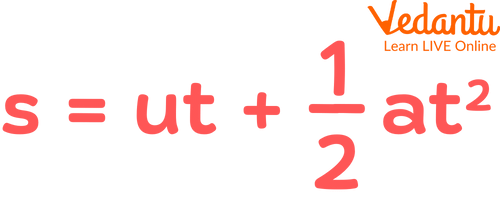
Second Equation
Third Equation of Motion
It is the relation between displacement, initial velocity, final velocity and time interval.
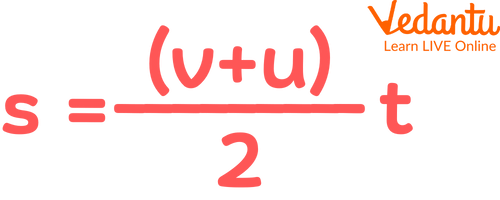
Third Equation
Squared Velocity Formula
It is the relation between acceleration, displacement, and squared initial and final velocities.
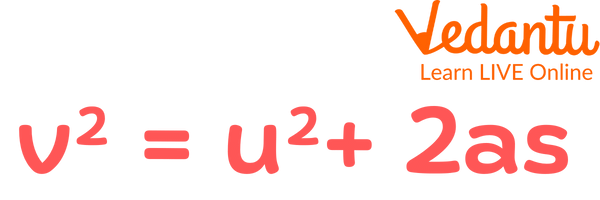
Squared Velocity Formula
Summary
For any motion under uniform acceleration, moving with a uniform initial velocity (u) to a final velocity (v), the above equations of motions can be easily applied. Equations of motion are very handy in Physics and allow us to find a solution to very sophisticated problems. All the equations of motion are explained in detail here. The equation of motion explains the behaviour of the physical system. It is explained in terms of its motion as a function of time.
FAQs on Motion Formulas in Physics
1. What is the importance of Equations of Motion?
Kinematics Equations of Motion describe the most fundamental concepts about the state of a body under motion in any plane, be it 1D, 2D or 3D. They can be easily used and applied to express or calculate any quantity of an object at various time intervals. These constitute the very basics of learning the subject of Physics. To study any object moving under any force and changing its position and speed concerning time can be stated with the help of equations of kinematics.
2. What is constant acceleration?
Acceleration is the rate of change in velocity per unit of time. If the velocity changes at a constant rate, then the type of acceleration is called constant acceleration. For example, if a body moving along a straight line changes its velocity uniformly from 3m/s to 5m/s in one second, its constant acceleration will be 2m/s². Therefore, the SI unit of acceleration is metre/second square (m/s²).
Acceleration=
Where
3. Define the difference between distance and displacement.
People often think distance and displacement are the same with different names. But actually, they are not the same; both are pretty different, as can be easily noticeable by the scientific definition of both terms.
Displacement is the shortest distance an object moves in a specific direction from a fixed position, whereas distance is the total distance travelled between two points. Both can also be related as displacement can be zero or equal or smaller than the distance of a path.









